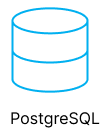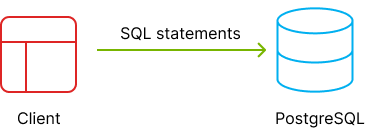Summary: in this tutorial, you’ll learn about PostgreSQL and what you can build with PostgreSQL.
What is a database #
A database is a repository for storing information. It allows you to store data from various sources, such as external files and websites, and organize it in a structured manner.
Typically, databases store data on hard drives, allowing for later retrieval or updates.
What is PostgreSQL #
PostgreSQL, often referred to as Postgres, is a free and open-source relational database management system (RDBMS):

In RDBMS, data is organized into multiple related table tables. For example, you can have a table to store products and another table to store invoices.
PostgreSQL is famous for its robustness, performance, and flexibility.
PostgreSQL is utilized across applications, ranging from small-scale projects to large enterprise systems.
PostgreSQL clients #
To work with PostgreSQL databases, you need a client program.
There are many types of PostgreSQL client programs available:
- Desktop applications.
- Web applications.
- Command-line interface (CLI) programs.
A PostgreSQL client program connects to the PostgreSQL server.
To interact with a PostgreSQL server, you write structured query language (SQL) statements to add, retrieve, update, and delete data:

It’s worth noting that SQL is a standardized language used to interact with various databases, including MySQL, Oracle, and Microsoft SQL Server.
Challenges #
When working with PostgreSQL, you’ll encounter some major challenges:
- How to write efficient SQL queries to retrieve data from PostgreSQL databases.
- How to design optimal database structures (or schemas) for your applications.
- Understand when to use PostgreSQL features like indexes, views, and stored procedures.